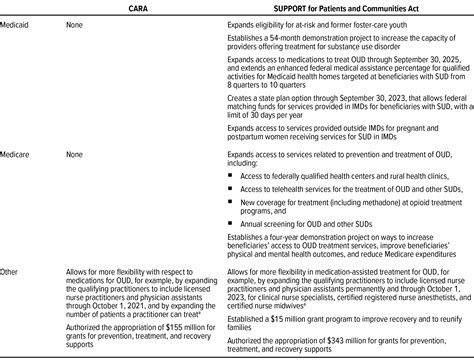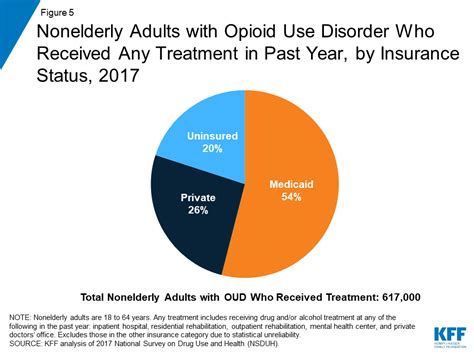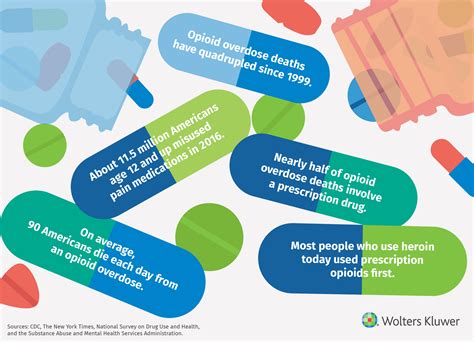Statistics Of Opioid Abuse

Opioid abuse and addiction have become a global health crisis, with devastating consequences for individuals, families, and communities. The widespread misuse of prescription opioids and the proliferation of illicit opioids, such as heroin and synthetic opioids like fentanyl, have led to a significant increase in overdose deaths and a range of social and economic challenges. Understanding the statistics surrounding opioid abuse is crucial for developing effective prevention, treatment, and recovery strategies.
The Opioid Epidemic: An Overview

The opioid epidemic, as it is often referred to, has evolved over several decades. In the late 1990s, pharmaceutical companies assured healthcare providers and the general public that patients would not become addicted to prescription opioid pain relievers. This led to a significant increase in the prescription of these medications, which consequently fueled the epidemic.
According to the National Institute on Drug Abuse (NIDA), the number of opioid prescriptions dispensed by pharmacies in the United States rose from around 76 million in 1991 to a peak of nearly 282 million in 2012. This surge in prescriptions contributed to a growing number of individuals becoming addicted to these potent painkillers.
The consequences of this epidemic are far-reaching. Opioid abuse has led to a dramatic rise in overdose deaths, increased rates of neonatal abstinence syndrome (NAS) among infants born to mothers struggling with opioid addiction, and a surge in the spread of infectious diseases such as HIV and hepatitis C.
Opioid Abuse Statistics: Global Perspective

The impact of opioid abuse is not limited to a single country; it is a global issue with far-reaching implications. Here are some key statistics highlighting the extent of the problem on a worldwide scale:
- In 2019, the United Nations Office on Drugs and Crime (UNODC) reported that an estimated 53 million people worldwide used opioids, with approximately 16 million of them using heroin.
- The same report revealed that opioid overdose deaths reached a staggering 115,000 globally in 2017, representing a 62% increase from the year 2000.
- Opioid abuse has also contributed to a rise in HIV and hepatitis C infections. The UNODC estimates that 1 in 8 people who inject drugs are living with HIV, and 1 in 5 are living with hepatitis C.
Regional Differences in Opioid Abuse
While opioid abuse is a global concern, its prevalence and impact vary across regions. North America, particularly the United States, has been severely affected by the epidemic. In contrast, the situation in Europe is more diverse, with different countries facing varying challenges. Here’s a closer look at the regional disparities:
| Region | Key Statistics |
|---|---|
| North America |
|
| Europe |
|

The Devastating Impact on Overdose Deaths
One of the most tragic outcomes of opioid abuse is the soaring number of overdose deaths. Opioids, especially when combined with other substances like alcohol or benzodiazepines, can lead to respiratory depression and ultimately, death.
The Centers for Disease Control and Prevention (CDC) reports that opioid-involved overdose deaths have skyrocketed in the United States. In 2021, a total of 75,673 overdose deaths involved opioids, representing a 15% increase from the previous year. This figure includes both prescription opioids and illicit opioids like heroin and fentanyl.
The rise of synthetic opioids, particularly fentanyl, has contributed significantly to this crisis. Fentanyl is a powerful synthetic opioid that is often mixed with other drugs, such as heroin, without the user's knowledge, increasing the risk of overdose. The CDC estimates that, in 2021, synthetic opioids (primarily fentanyl) were involved in approximately 71,238 overdose deaths.
Impact on Specific Populations
The devastating impact of opioid abuse is not evenly distributed across all populations. Certain groups, such as adolescents and young adults, are at a higher risk of opioid misuse and its consequences. Here are some key statistics highlighting the impact on specific populations:
- Adolescents and Young Adults: Opioid misuse is a growing concern among this age group. The National Survey on Drug Use and Health (NSDUH) reports that in 2020, approximately 3.7% of adolescents aged 12 to 17 and 10.9% of young adults aged 18 to 25 misused opioids in the past year.
- Pregnant Women and Neonatal Abstinence Syndrome: Opioid abuse during pregnancy can lead to neonatal abstinence syndrome (NAS) in newborns. The American Academy of Pediatrics estimates that the rate of NAS has increased significantly, with an estimated 6 out of every 1,000 hospital births affected by NAS in 2016.
- Veterans and Military Personnel: Opioid abuse is also a concern within the veteran and military communities. The Department of Veterans Affairs reports that veterans with a history of opioid use disorder are at a higher risk of overdose, with an estimated 10% to 20% of veterans receiving VA healthcare having an opioid use disorder.
The Economic and Social Costs of Opioid Abuse
The consequences of opioid abuse extend beyond the tragic loss of lives. The epidemic has significant economic and social costs, impacting individuals, families, and communities.
According to a study published in the American Journal of Preventive Medicine, the economic burden of prescription opioid misuse alone in the United States was estimated to be $78.5 billion in 2013. This figure includes healthcare costs, lost productivity, addiction treatment, and criminal justice expenses.
Opioid abuse also contributes to a range of social issues, including increased crime rates, strained family relationships, and a decline in overall community well-being. The long-term effects of opioid addiction can lead to homelessness, unemployment, and a cycle of poverty, further exacerbating the social and economic challenges faced by affected individuals and their communities.
The Way Forward: Prevention and Treatment
Addressing the opioid epidemic requires a multi-faceted approach that encompasses prevention, treatment, and recovery support. Here are some key strategies and initiatives aimed at tackling this crisis:
- Prevention Programs: Implementing evidence-based prevention programs, such as those focused on education, life skills training, and alternative pain management strategies, can help reduce the risk of opioid misuse and addiction.
- Prescription Monitoring Programs: Enhancing prescription monitoring programs can help identify and address potential misuse or diversion of prescription opioids, reducing the supply available for non-medical use.
- Medication-Assisted Treatment (MAT): MAT, which combines behavioral therapy and medications like methadone, buprenorphine, or naltrexone, has proven effective in treating opioid use disorder. Expanding access to MAT can significantly improve treatment outcomes.
- Naloxone Distribution: Naloxone, a medication that can reverse opioid overdose, has saved countless lives. Increasing access to and training on the use of naloxone can further reduce overdose deaths.
- Recovery Support Services: Providing comprehensive support services, including housing, employment assistance, and mental health counseling, can help individuals maintain long-term recovery and reintegrate into society.
Frequently Asked Questions

What are the most commonly abused opioids?
+The most commonly abused opioids include prescription painkillers such as oxycodone (OxyContin), hydrocodone (Vicodin), and fentanyl. Illicit opioids like heroin and synthetic opioids like fentanyl are also widely abused.
How do opioids affect the brain and body?
+Opioids bind to specific receptors in the brain and body, reducing the perception of pain and increasing feelings of pleasure. Prolonged use can lead to physical dependence and addiction, impacting various bodily functions and mental health.
What are the signs of opioid abuse or addiction?
+Signs of opioid abuse or addiction may include tolerance (needing more of the substance to achieve the same effect), withdrawal symptoms when use is reduced or stopped, preoccupation with obtaining and using the drug, neglecting responsibilities, and changes in behavior or mood.
How can opioid abuse be prevented?
+Prevention strategies include responsible prescribing practices, patient education on the risks of opioid use, alternative pain management approaches, and community-based prevention programs that focus on awareness and early intervention.
What treatment options are available for opioid addiction?
+Treatment options for opioid addiction include medication-assisted treatment (MAT) with medications like methadone, buprenorphine, or naltrexone, behavioral therapies, and support groups. A comprehensive treatment plan should address both the physical and psychological aspects of addiction.



